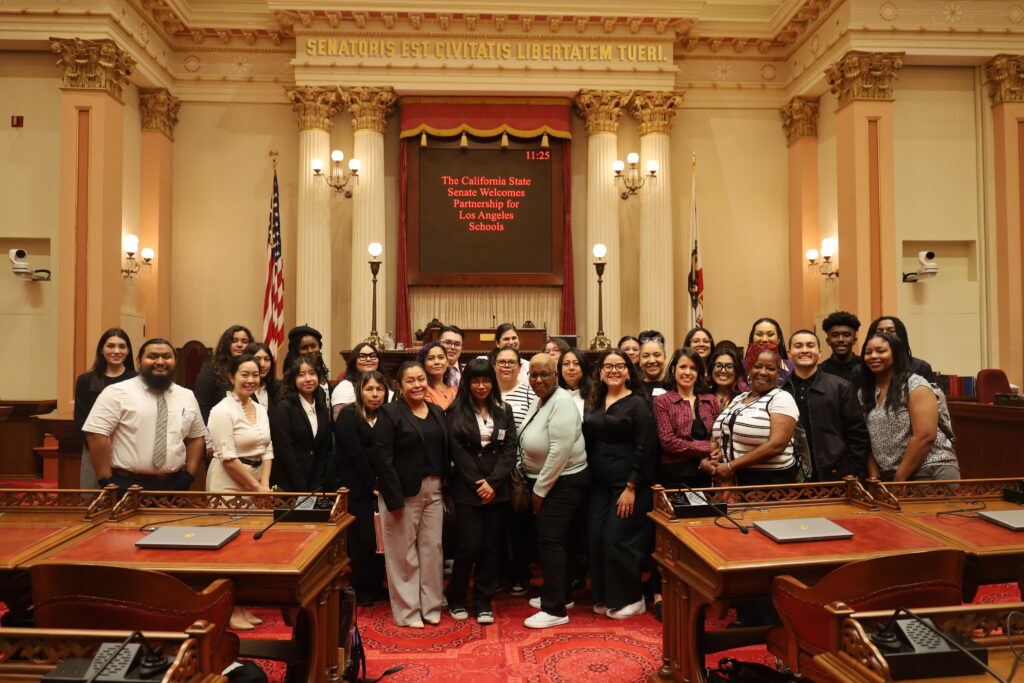
It’s graduation week in Los Angeles — a time that should be filled with joy and celebration for students and their families. Instead, fear and uncertainty have taken hold in many of our communities.
Since June 6, federal agents have been conducting extensive raids across Los Angeles, targeting areas many of our students call home. In response, some of our schools mobilized community volunteers or were forced to offer virtual graduation options because families were too afraid to attend in person.
These actions have shattered the sense of safety that schools work so hard to build. These raids and subsequent arrests have sparked protests.
I recently stood with staff, students, teachers and parents in Sacramento, urging legislators to pass legislation that would boost protections for immigrant communities.
Among the group was an undocumented mother of two U.S.-born students who spoke about the emotional changes she has seen recently in her 10-year-old son. “My kids are scared that something might happen during drop-off or pickup, or that immigration officers will try to come into their schools,” she said. “Schools are supposed to be their second homes — places where kids grow, learn and feel safe. But when immigration officials show up like this, it is hard to feel that way.”
Her son now suffers from panic attacks, clinging to his mother after school, terrified she won’t come home. In response, his mother has done everything she can to protect her children, from seeking therapy for her son, to traveling to Sacramento with the Partnership for Los Angeles Schools (a nonprofit that manages 20 LAUSD schools in historically under-resourced communities) to advocating for stronger protections against recent immigration enforcement. “I am afraid, too, but I do not show it,” she said.
This family’s feelings reflect broader experiences across Los Angeles Unified — not just for undocumented families, but also for U.S.-born students and American citizens who are feeling the ripple effects of these raids. This past April, authorities were denied entry into two elementary schools after they showed up unannounced and sought to get in touch with students who allegedly entered the country without documentation.
“I’m still mystified as to how a first-, second-, third-, fourth- or sixth-grader would pose any type of risk to the national security of our nation,” said LAUSD Superintendent Alberto Carvalho, who was an undocumented immigrant as a teenager from Portugal.
There are an estimated 133,000 undocumented students enrolled in California, and roughly 1 million live with a parent or caregiver who is undocumented. This will not be the last time we hear a story about agents attempting to enter schools.
Without clear laws and protections, there will be more stories of schools being invaded, more confusion, more fear, and more trauma.
No family should have to live in fear like this. In 1982, the U.S. Supreme Court affirmed that states cannot constitutionally deny a free and public education to undocumented students. Families are trying to exercise that right.
Today, the Partnership for Los Angeles Schools and its partners are urging lawmakers to protect young people when they go to school by not allowing immigration enforcement to be left to the discretion of individual ICE agents. Such actions should be authorized in writing by a judge. Further, when student safety is in doubt, students and their families should have the right to be forewarned and be given the freedom to stay home without schools being punished with funding cuts.
These common-sense measures would help ensure that schools continue to be what they were always meant to be: institutions of learning. When students are scared, they cannot learn. When families fear being torn apart, they are reluctant to engage with educators. And when the government sends agents to schools, trust is broken.
Many states and districts have issued new or updated guidance this year, building on pledges they made to be “safe zones” for immigrant communities during Trump’s first term. Several have published guidance about how schools can comply with federal and state laws and respond to the presence of ICE on campuses and what type of student and parental information can be shared.
LAUSD has continued to be a leader in California and nationwide. In addition, the district board has passed resolutions stating that LAUSD will be an “immigrant sanctuary.” The state has prepared guidance to help school districts comply with state law limiting participation in immigration enforcement activities.
But much more will be needed if we are to keep students and their families safe in an increasingly hostile environment. Join us in urging state lawmakers to support several immigration-relsted, including AB 49, which passed the Assembly last month and will be voted on by the Senate Education Committee on June 18.
•••
Guadalupe Guerrero is CEO of the Partnership for Los Angeles Schools, a nonprofit that manages 20 LAUSD schools in historically under-resourced communities.
The opinions expressed in this commentary represent those of the author. EdSource welcomes commentaries representing diverse points of view. If you would like to submit a commentary, please review our guidelines and contact us.

دیدگاهتان را بنویسید